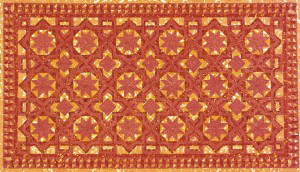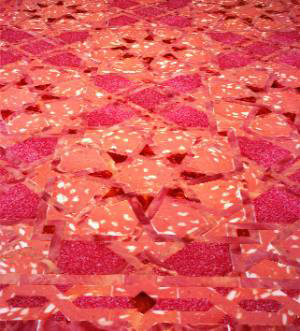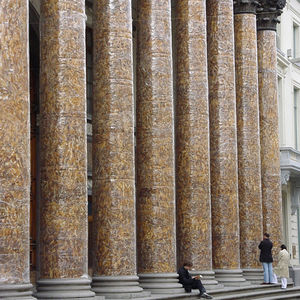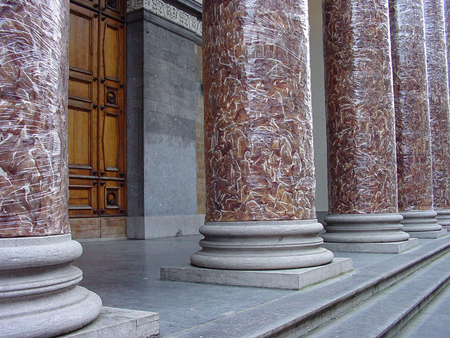Marvelous Marble
Four Framed Hardstone Panels
English (in imitation of an Italian typology)

Getty Center, Los Angeles
Based on a type of inlay dating to the 15oos, specimen plaques such as these were popular from the 1700s as celebrations of nature’s beauty and of the human ability to classify such marvels scientifically.
Wim Delvoye
Marble Floors, 1999

Known for his exceptional transformations of images and objects using processes typically associated with the applied arts (i.e. wood-carving, stained glass, tattoo), Delvoye in his “Marble Floors” has photographed “charcuterie”– precision cut salami, chorizo, mortadella and ham, arranged in geometric patterns based on Italian Baroque and Islamic motifs. The visceral and sometimes unsettling effect this body of work can have on a viewer is balanced by the perfect order and rhythmic harmony of these familiar Baroque and Islamic patterns.

Jan Fabre
De benen van de rede ontveld, 2000
(Legs stripped from reason)

Jan Fabre is an artist, theatre-maker and author. He was born in Antwerp in 1958. In the late seventies he studied at the Royal Academy of Fine Art and the Municipal Institute of Decorative Arts and Crafts in Antwerp. His first works date from that period. Jan Fabre makes installations, sculptures, drawings, films and performances. Over the years he has built up a sizeable body of work and has become internationally acclaimed.
In 2000 he wrapped the respectable columns of the Aula University building in Ghent, Belgium with layers of ham. Slowly the ham started to rot and turned green of fungi, imitating the marble structure even more. The commotion was incredible. The citizens of Ghent complained that it was such a waste of good food (thinking of all the poor people around). Initially the exhibition organisation replied that it was secondary Parma ham, ready to thrown away anyway, but the Parma ham company declared that they don’t have secondary ham. All their ham is prime meat! When the smell was unbearable, the work was removed.
